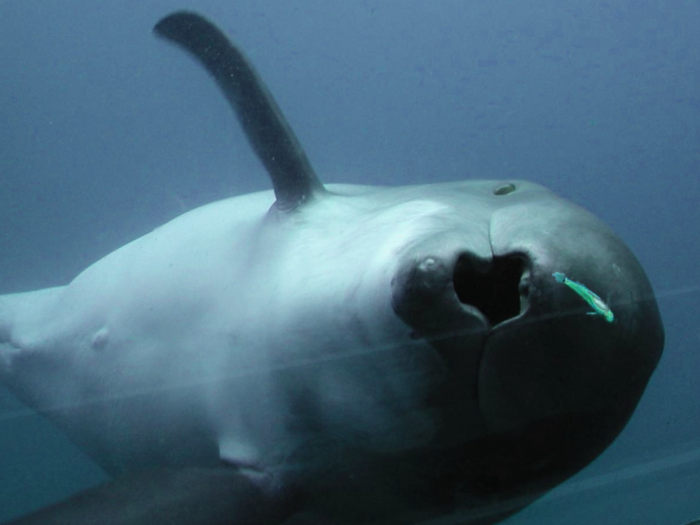Whales use a combination of rapid echolocation adjustments and nimble brain responses to zero in on fast-moving prey, suggests a study published today in eLife.

Credit: Jakob H. Kristensen/Fjord and Belt
(CC BY 4.0)
Whales use a combination of rapid echolocation adjustments and nimble brain responses to zero in on fast-moving prey, suggests a study published today in eLife.
The findings show that echolocating whales’ brains respond at speeds comparable to visual predators as they target their prey. New insights on how these unique animals hunt may aid efforts to protect them in the wild.
“Visual animals must respond quickly to sudden movements of their prey or predators,” says first author Heather Vance, Postgraduate Student at the Sea Mammal Research Unit, University of St Andrews, Scotland, UK. “For example, primates’ vision allows them to respond to sudden movements in as little as 50 milliseconds – less than the blink of an eye. But what about whales that use echolocation? We wanted to know if echolocators have a way to lock onto prey movements, like visual animals do, when they close in for the kill and how quickly they can react to prey movements.”
To answer these questions, Vance and her international team used a non-invasive method to monitor the sound and movement of whales. They attached sound and movement loggers using suction cups to six wild harbour porpoises, which hunt in shallow waters off Denmark, and eight Blainville’s beaked whales, deep-diving animals that live off the Canary Islands. They then analysed data on both the click sounds emitted by the whales and the echoes that help them track the movements of their prey.
Both types of whales rapidly adapted their clicking rate as they tracked their prey, emitting as many as 500 clicks per second while in hot pursuit. Whales responded to sudden changes in the position of their prey in as little as 50 to 200 milliseconds by adapting their clicking rate.
“Despite the high clicking rates of the whales, their response speeds were similar to visual responses in monkeys and humans, suggesting that their brains may be wired in much the same way as visual animals,” Vance explains.
The authors add that knowing more about how echolocation works will help scientists better understand how echolocation evolved, and how noise from ships and other human activities may interfere with the ability of whales to hunt. This insight could have potential implications for the animals’ survival.
“Many whale populations are shrinking, which has led to efforts to help protect them,” concludes senior author Mark Johnson, Associate Professor at the Aarhus Institute of Advanced Studies, Aarhus University, Denmark. “Knowing what conditions allow these animals to thrive will make conservation efforts all the more effective.”
##
Media contact
Emily Packer, Media Relations Manager
eLife
+44 (0)1223 855373
About eLife
eLife is a non-profit organisation created by funders and led by researchers. Our mission is to accelerate discovery by operating a platform for research communication that encourages and recognises the most responsible behaviours. We aim to publish work of the highest standards and importance in all areas of biology and medicine, including Ecology, while exploring creative new ways to improve how research is assessed and published. eLife receives financial support and strategic guidance from the Howard Hughes Medical Institute, the Knut and Alice Wallenberg Foundation, the Max Planck Society and Wellcome. Learn more at https://elifesciences.org/about.
To read the latest Ecology research published in eLife, visit https://elifesciences.org/subjects/ecology.
Journal
eLife
DOI
10.7554/eLife.68825
Article Title
Echolocating toothed whales use ultra-fast echo-kinetic responses to track evasive prey
Article Publication Date
26-Oct-2021




